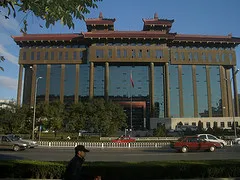
Chinese government puts SMEs in a bind
They are seen as the unfortunate but necessary collateral damage in order to slow down inflation and restructure the economy.
According to Macquarie’s report, smaller companies have been greatly affected by tighter monetary conditions imposed by the government to fight inflation.
Little sympathy for SMEs….
There isn’t a huge amount of sympathy out there for China’s small- and medium-sized enterprises. A common view instead seems to be that they are just the unfortunate but necessary collateral damage if the government is to achieve its twin aims of slowing inflation, and restructuring the economy.
So from the short-term perspective of beating back inflation, SME problems are the eggs in the omelette: some firms need to go bust to produce the end-product. In terms of the larger aim of restructuring, SMEs are the manifestation of Joseph Schumpeter’s process of “creative destruction”, the refreshing of the corporate sector that needs to occur if China’s economy is to change and continue to grow.
To an extent, both of these observations are reasonable. Monetary conditions have been tightened to fight inflation, and that must be having an impact on weaker companies. And the real appreciation of the RMB – the product of a rise in the nominal value of the currency combined with rising costs at home – is part of the restructuring process, forcing some export-companies out of business, and imposing changes on the others that remain.
…despite their inferior status
The problem is that in China, SMEs are both structurally and cyclically disadvantaged. The structural challenges can be seen in the policy recommendations of Zhou Dewen, the head of the SME association in Wenzhou. Speaking to us a couple of weeks ago, he outlined four changes that would help level the playing field between SMEs and other firms: lower taxes; an SME agency in the central government; better access to capital markets; and an opening up of the financial industry.
The proposal of financial reform links the structural challenges with the cyclical ones. To stand a chance of coping with the changing economic situation, SMEs need some money to be able to invest, whether that be to change the type of production, to build a brand, or to develop new distribution channels.
Unfortunately, even when macro policy is loose, China’s banks tend to discriminate against SMEs, because they lack the collateral that gives lending the perception of being safe. Having only marginal access to capital even at the best of times, SMEs are almost entirely cut off when funding conditions tighten. They then have to resort to the informal financial sector, where monthly interest rates can be as high as 8%.
Non-bank formal finance has dried up…
With such high rates, it is difficult to think that the informal financial sector is a big macro phenomenon. Our understanding is that most informal market loans are very short-term, and used mainly for bridging purposes. More important is the formal non-bank financial market, ranging from the bond market to trust companies and bankers acceptances.
Interest rates on these forms of credit aren’t so high as to be unattractive. Corporate bond yields last year were just 3-5%. The interest rate on bank acceptances was just 3.5% in October last year. In 2010 good-quality real estate firms could borrow from trust companies at interest rates of 10-12%. This relative cheapness fuelled rapid growth in these alternative sources credit, from a flow of Rmb730bn in 2007 to Rmb6trn in 2010, becoming almost as big as the flow of bank loans.
As overall credit conditions tightened, the cost on all these alternative sources of credit rose in the first six months of 2011, with interest rates on bank acceptances rising to 7.6% in July. These rates then took another step-up over the summer, reaching 11% by late September. Social finance figures released last week suggest the reason: the flow of these alternative sources of funding has virtually dried up, shrinking from Rmb510bn/month in 2010 and 1H11 to just Rmb130bn in JulySeptember this year.
…which should matter for all firms, not just the small
We have been through the reasons for this change before. Regulatory change has played a role, such as PBC’s extension of reserve requirements to cover margin deposits (which affects the issuance of bank acceptances). We suspect it is also partly a market-driven phenomenon, as the macro risks grow, causing potential lenders to become more cautious (shown for example in rising yields on the market for corporate paper).
The shrinkage in social finance flows suggests that tightening is much more than an SME-specific phenomenon. Boasting interest rates that aren’t sky-high, this formal non-bank sector has a better claim to be a “shadow banking” sector than does the much-discussed grey market. Property companies for example have been keen borrowers from the trust market. And to issue bonds in China, companies have to be relatively big (enterprise bond issuers have to have net assets above Rmb30mn).
That tightening is rather broad was the suggestion of other indicators last week. First, the flash version of Market News International’s October Business Sentiment Index, based on responses from around 180 listed companies. After being less bad in recent months, the credit availability reading in the survey fell back again to just 37.8. As a survey of around 180 listed companies, MNI doesn’t track marginal firms in the economy. There have also been media reports of financing issues in the transport infrastructure sector of the economy, with highway construction consequently reported to be 20% behind plan.



![SBR 5 Lorem Ipsum News 2 [8 May]](https://cmg-qa.s3.ap-southeast-1.amazonaws.com/s3fs-public/styles/exclusive_featured_article/public/2025-05/a_hand_pointing_to_a_futuristic_technology_5b87c9d0e3_3.png.webp?itok=M3Hf-9XR)
![SBR 4 Lorem Ipsum [8 May Top Stories]](https://cmg-qa.s3.ap-southeast-1.amazonaws.com/s3fs-public/styles/exclusive_featured_article/public/2025-05/a_hand_pointing_to_a_futuristic_technology_5b87c9d0e3_2.png.webp?itok=2m5Wl0MX)


![Exclusive three SBR 12 Lorem Ipsum [8 May]](https://cmg-qa.s3.ap-southeast-1.amazonaws.com/s3fs-public/styles/exclusive_featured_article/public/2025-05/a_hand_pointing_to_a_futuristic_technology_5b87c9d0e3_11.png.webp?itok=8kn_UIfA)
![SBR 3 Lorem Ipsum [ Exclusive 2]](https://cmg-qa.s3.ap-southeast-1.amazonaws.com/s3fs-public/styles/exclusive_featured_article/public/2025-05/a_hand_pointing_to_a_futuristic_technology_5b87c9d0e3_1.png.webp?itok=YCyjLegJ)
![SBR 2 Lorem Ipsum [8 May]](https://cmg-qa.s3.ap-southeast-1.amazonaws.com/s3fs-public/styles/exclusive_featured_article/public/2025-05/a_hand_pointing_to_a_futuristic_technology_5b87c9d0e3_0.png.webp?itok=_cKD-29o)

![Video [Event News]](https://cmg-qa.s3.ap-southeast-1.amazonaws.com/s3fs-public/styles/event_news_featured_article/public/2025-05/screenshot-2025-05-08-at-4.58.53-pm_0.png.webp?itok=Kud35sMs)
![Event News SBR 9 Lorem Ipsum [8 may]](https://cmg-qa.s3.ap-southeast-1.amazonaws.com/s3fs-public/styles/event_news_thumbnail/public/2025-05/a_hand_pointing_to_a_futuristic_technology_5b87c9d0e3_8.png.webp?itok=DTh_dbYp)
![Event News SBR 9 Lorem Ipsum [8 May]](https://cmg-qa.s3.ap-southeast-1.amazonaws.com/s3fs-public/styles/event_news_thumbnail/public/2025-05/a_hand_pointing_to_a_futuristic_technology_5b87c9d0e3_7.png.webp?itok=vzDAzb6V)
![Event News SBR 8 Lorem Ipsum [8 May]](https://cmg-qa.s3.ap-southeast-1.amazonaws.com/s3fs-public/styles/event_news_thumbnail/public/2025-05/a_hand_pointing_to_a_futuristic_technology_5b87c9d0e3_6.png.webp?itok=jvHFc4P6)
![Video [Event News]](https://cmg-qa.s3.ap-southeast-1.amazonaws.com/s3fs-public/styles/video_thumbnail/public/2025-05/screenshot-2025-05-08-at-4.58.53-pm_0.png.webp?itok=yZnI0YBb)
![Video 1 SBR [8 May]](https://cmg-qa.s3.ap-southeast-1.amazonaws.com/s3fs-public/styles/video_thumbnail/public/2025-05/screenshot-2025-05-08-at-4.58.53-pm.png.webp?itok=9AAeRz_k)

 Advertise
Advertise

